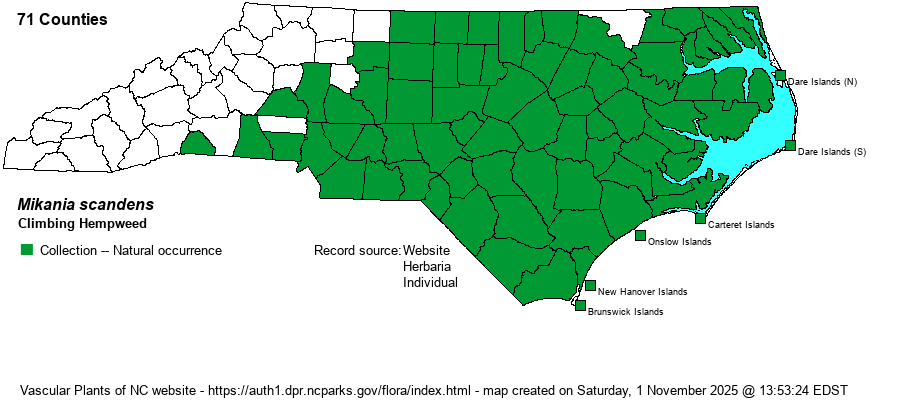| Author | (L.) Willdenow | |
| Distribution | Coastal Plain (including the Outer Banks), Sandhills, and Piedmont -- except absent in the higher elevations. Also absent in the Mountains.
ME to southern Ont., south to southern FL and southeastern TX; Mex., Bahamas. | |
| Abundance | Common to locally abundant in the Coastal Plain; generally common in the eastern and central Piedmont, but rare to absent in the westernmost counties. | |
| Habitat | Moist to wet freshwater marshes, river shores and banks, fresh-tidal and brackish marshes, swamp forest margins, openings and clearings, roadside ditches. Locally, plants will scramble up into adjacent mesic or even dry areas -- though it is typically considered as a wetland species. | |
| Phenology | Flowering and fruiting July-October. | |
| Identification | Very few of our composites (Asteraceae) are vines; this is by far the most numerous. Vines climb or scramble up to 10 feet long (or more), with long-stalked, opposite, ovate, long-pointed leaves that have wavy margins and heart-shaped bases. Inflorescences are produced from leaf axils, are dome-shaped clusters up to 3 inches across, pale pink to white, all disk florets. These flowers are heavily used as nectar sources by a great array of insects. | |
| Taxonomic Comments | None
| |
| Other Common Name(s) | Climbing Hempvine | |
| State Rank | S5 | |
| Global Rank | G5 | |
| State Status | | |
| US Status | | |
| USACE-agcp | FACW link |
| USACE-emp | FACW link |

